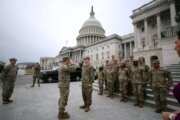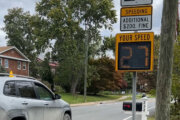Efforts that could literally change the landscape of the nation’s capital are under way.
The National Capitol Planning Committee and the D.C. Office of Planning have both been tasked by Congressman Darrell Issa, R-Calif., to make a study of the 113-year-old Height of Buildings Act, which limits how tall buildings in the District can rise.
At a meeting held Saturday to get public input on the study, DCOP director Harriet Tregoning said she wants to reassure people that “those characteristic things about Washington, we would propose to maintain.”
Although her agency has been tasked with finding ways to modernize the law, Tregoning says any changes, if needed, could in fact be relatively minor.
“We’d maintain the horizontality of the city,” Tregoning says. “We would continue to protect the views and the vistas toward our prominent monuments and landmarks.”
The Height Act has been law since 1910. The NCPC and DCOP have focused much of their attention on the parts of the law mandating that buildings in residential areas can be no higher than 90 feet; that mixed-use or commercial-area buildings can be as high as the width of the street plus 20 feet, but no higher than 130 feet; and the provision that limits buildings north of Pennsylvania Avenue between First and Fifteenth Streets to 160 feet.
Michael Busch, who lives in Dupont Circle and has lived in the District for 40 years, said at Saturday’s public meeting that he’s worried that if the recommendations are accepted by Congress, D.C. will be a carbon copy of other major cities such as New York or Chicago.
“We are the capital of the United States; we do not have to look like every other city in the United States,” he says. During the question-and-answer session Saturday, another resident said a change to the residential portion of the law could attract new residents.
Saturday’s meeting was the second in a series both agencies are hosting to get public feedback on the issue. A third will be held on Tuesday, June 4, at the NCPC offices in D.C. from 6:30 to 8:30 p.m. A fourth meeting will be held on Thursday, June 6, at Savoy Elementary School from 6:30 to 8:30 p.m.
Part of the study’s methodology uses architectural case studies of London, Paris, Barcelona, San Francisco, and Vancouver and how each city’s structure could possibly work in D.C.
The NCPC and the DCOP plan to present the final study before Congress in September.
Follow @WTOP on Twitter.







